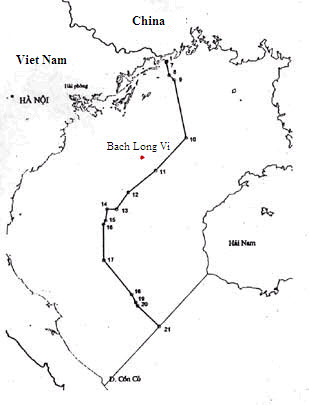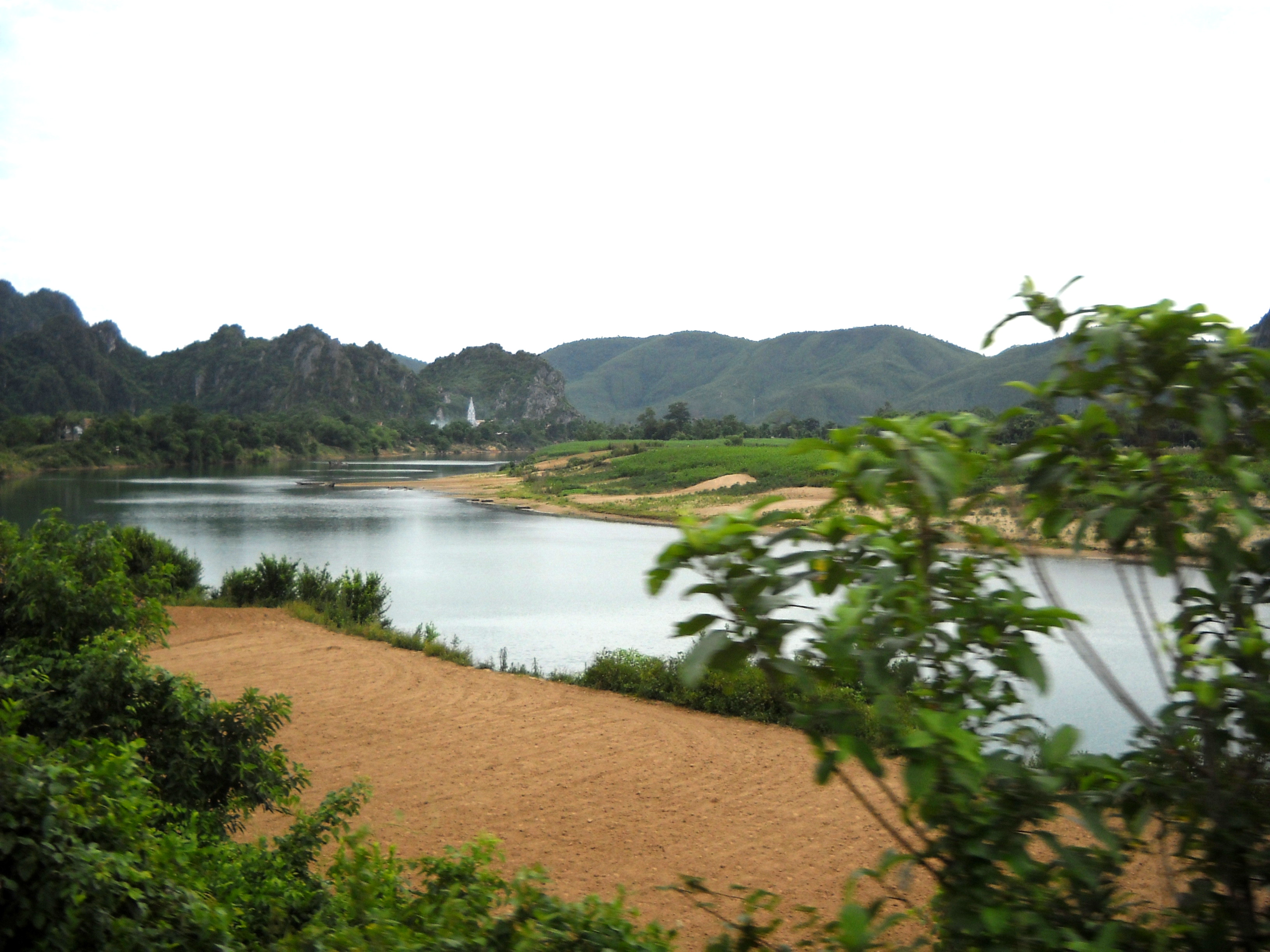|
Tongking
Tonkin, also spelled Tongkin, Tonquin or Tongking, is an exonym referring to the northern region of Vietnam. During the 17th and 18th centuries, this term referred to the domain ''Đà ng Ngoà i'' under Trịnh lords' control, including both the Northern and Thanh- Nghệ regions, north of the Gianh River. From 1884 to early 1945, this term was used for the French protectorate of Tonkin, composed of only the Northern region. Names "Tonkin" is a Western rendition of 東京 ''Đông Kinh'', meaning 'Eastern Capital'. This was the name of the capital of the Lê dynasty (present-day Hanoi). Locally, Tonkin is nowadays known as ''miền Bắc'', or ''Bắc Bộ'', meaning ' Northern Region'. The name was used from 1883 to 1945 for the French protectorate of Tonkin (Vietnamese: ''Bắc Kỳ'' 北圻), a constituent territory of French Indochina. Geography It is south of Yunnan (Vân Nam) and Guangxi (Quảng Tây) Provinces of China; east of northern Laos and west of the Gulf of Ton ... [...More Info...] [...Related Items...] OR: [Wikipedia] [Google] [Baidu] |
Г‚u LбєЎc
Г‚u LбєЎc (chб»Ї HГЎn: з”ЊиІ‰ (Peripheral Records/Volume 1:6a): "зЋ‹ж—ўдЅµж–‡йѓЋењ‹пјЊж”№ењ‹и™џж›°з”ЊиІ‰ењ‹гЂ‚""The King then annexed the VДѓn Lang nation, changed the nation's name to Г‚u LбєЎc nation."/甌駱; (Volume 113): "дё”еЌ—ж–№еЌ‘жї•пјЊи »е¤·дёй–“,其東閩越千人眾號稱王,其西甌駱裸國亦稱王。: "Moreover, this region of the south is low and damp and inhabited only by barbarian tribes. To the east of me is the chief of Min-yГјeh who, with no more than a thousand subjects, calls himself a king, while to the west are the lands of Western Ou and Lo-lo, whose rulers likewise call themselves kings." pinyin: ''ЕЊu LuГІ''; Wade–Giles: ''Wu1-lo4'' Middle Chinese ( ZS): *''К”Й™u-*lЙ‘kМљ'' < *''К”Гґ-rГўk'') was a supposed polity that covered parts of modern-day |
Cб»• Loa Citadel
Cổ Loa Citadel () is an important fortified settlement and archaeological site in present-day Hanoi's Đông Anh District, roughly 17 kilometers north of present-day Hanoi, in the upper plain north of the Red River. Various relics of the Bronze Age Phùng Nguyên culture and Đông Sơn culture have been found in Cổ Loa, although it was later established as the capital of Âu Lạc Kingdom during the 3rd century BCE (about 257 BCE). It might be the first political center of the Vietnamese civilization. The settlement’s concentric walls resemble a snail’s shell; it had an outer embankment covering 600 hectares. Etymology The name "Cổ Loa" is Sino-Vietnamese reading of 古 螺 ( Standard Chinese: ''gǔ luó''), literally meaning "ancient spiral". According to Đại Việt SỠKý Toà n Thư, the citadel is shaped like a snail, reflecting of the citadel's multi-layered structure with concentric ramparts and moats.Kiernan, Ben (2017). ''Việt Nam: a history from ... [...More Info...] [...Related Items...] OR: [Wikipedia] [Google] [Baidu] |
LГЄ Dynasty
The LГЄ dynasty, also known in historiography as the Later LГЄ dynasty (, chб»Ї HГЎn: жњќеѕЊй»Ћ, chб»Ї NГґm: иЊ№еѕЊй»Ћ), officially ДђбєЎi Việt (; Chб»Ї HГЎn: 大越), was the longest-ruling List of Vietnamese dynasties, Vietnamese dynasty, having ruled from 1428 to 1789, with an interregnum between 1527 and 1533. The LГЄ dynasty is divided into two historical periods: the Initial LГЄ dynasty (Vietnamese language, Vietnamese: triб»Ѓu LГЄ sЖЎ, chб»Ї HГЎn: жњќй»Ће€ќ, or Vietnamese: nhГ LГЄ sЖЎ, chб»Ї NГґm: иЊ№й»Ће€ќ; 1428–1527) before the usurpation by the MбєЎc dynasty, in which emperors ruled in their own right, and the Revival LГЄ dynasty (Vietnamese language, Vietnamese: triб»Ѓu LГЄ Trung hЖ°ng, chб»Ї HГЎn: жњќй»Ћдёи€€, or Vietnamese language, Vietnamese: nhГ LГЄ trung hЖ°ng, chб»Ї NГґm: иЊ№й»Ћдёи€€; 1533–1789), in which emperors were figures reigned under the auspices of the powerful Trб»‹nh lords, Trб»‹nh family. The Revival LГЄ dynasty was marked by two lengthy civ ... [...More Info...] [...Related Items...] OR: [Wikipedia] [Google] [Baidu] |
Lạc Việt
The Lạc Việt or Luoyue ( or ; ← Middle Chinese: *''lɑk̚-ɦʉɐt̚'' ← Old Chinese *''râk-wat'') were an ancient conglomeration of peoples inhabiting northern Vietnam, particularly the ancient Red River Delta, from approximately 700 BC to 100 AD, during the last stage of the Neolithic and the beginning of the period of classical antiquity. They spoke Kra-Dai and Austroasiatic languages. From archaeological perspectives, they were known as the Dongsonian. The ''Lạc Việt'' were known for casting large Heger Type I bronze drums, cultivating paddy rice, and constructing dikes. The Lạc Việt who owned the Bronze Age Đông Sơn culture, which centered at the Red River Delta (in Northern Vietnam), are hypothesized to be the ancestors of the modern Kinh Vietnamese. Another population of Luoyue, who inhabited the Zuo river's valley (now in modern Southern China), are believed to be the ancestors of the modern Zhuang people; additionally, Luoyue in southern China are bel ... [...More Info...] [...Related Items...] OR: [Wikipedia] [Google] [Baidu] |
Vietnam
Vietnam, officially the Socialist Republic of Vietnam (SRV), is a country at the eastern edge of mainland Southeast Asia, with an area of about and a population of over 100 million, making it the world's List of countries and dependencies by population, fifteenth-most populous country. One of two communist states in Southeast Asia, Vietnam shares land borders with China to the north, and Laos and Cambodia to the west. It shares Maritime boundary, maritime borders with Thailand through the Gulf of Thailand, and the Philippines, Indonesia, and Malaysia through the South China Sea. Its capital is Hanoi and its largest city is Ho Chi Minh City. Vietnam was inhabited by the Paleolithic age, with states established in the first millennium BC on the Red River Delta in modern-day northern Vietnam. Before the Han dynasty's invasion, Vietnam was marked by a vibrant mix of religion, culture, and social norms. The Han dynasty annexed Northern and Central Vietnam, which were subs ... [...More Info...] [...Related Items...] OR: [Wikipedia] [Google] [Baidu] |
Tonkin (French Protectorate)
Tonkin (), or BбєЇc Kб»і (), was a French protectorate encompassing modern Northern Vietnam from 1883 to 1949. Like the French protectorate of Annam, Tonkin was still nominally ruled by the Vietnamese Nguyб»…n dynasty. In 1886, the French separated Tonkin from the Nguyб»…n imperial court in Huбєї by establishing the office of "Viceroy" (, ).Dommen, Arthur. ''The Indochinese Experience of the French, and the Americans, Nationalism and Communism in Cambodia, Laos, and Vietnam.'' Bloomington, Indiana: Indiana University Press, 2001. Page 23. However, on 26 July 1897, the position of Viceroy was abolished, officially making the French resident-superior of Tonkin both the representative of the French colonial administration and the Nguyб»…n dynasty court in Huбєї, giving him the power to appoint local mandarins. In 1887, Tonkin became a part of the Union of Indochina. In 1945, the emperor BбєЈo ДђбєЎi rescinded the PatenГґtre Treaty, ending the French protectorates over Annam ... [...More Info...] [...Related Items...] OR: [Wikipedia] [Google] [Baidu] |
ДђГґng SЖЎn Culture
The Dong Son culture, Dongsonian culture, or the Lạc Việt culture (named for modern village Đông Sơn, a village in Thanh Hóa, Vietnam) was a Bronze Age culture in ancient Vietnam centred at the Red River Valley of northern Vietnam from 1000 BC until the first century AD.Higham, C., 2014, ''Early Mainland Southeast Asia'', Bangkok: River Books Co., Ltd., Vietnamese historians attribute the culture to the states of Văn Lang and Âu Lạc. Its influence spread to other parts of Southeast Asia, including Maritime Southeast Asia, from about 1000 BC to 1 BC. The Đông Sơn people were skilled at cultivating rice, keeping water buffalos and pigs, fishing and sailing in long dugout canoes. They also were skilled bronze casters, which is evidenced by the Dong Son drum found widely throughout northern Vietnam and Guangxi in China. To the south of the Đông Sơn culture was the Sa Huỳnh culture of the proto-Chams. Identity The Dongsonians spoke either Austroas ... [...More Info...] [...Related Items...] OR: [Wikipedia] [Google] [Baidu] |
Gulf Of Tonkin
The Gulf of Tonkin is a gulf at the northwestern portion of the South China Sea, located off the coasts of Tonkin ( northern Vietnam) and South China. It has a total surface area of . It is defined in the west and northwest by the northern coastline of Vietnam down to the Cồn Cỏ district, in the north by China's Guangxi Zhuang Autonomous Region, and to the east by the Leizhou Peninsula and Hainan Island. English sources from the People's Republic of China refer to the Gulf of Tonkin as Beibu Wan. Description and etymology The name ''Tonkin'', written "" in chữ Hán characters and in the Vietnamese alphabet, means "eastern capital", and is the former toponym for Hanoi, the present capital of Vietnam. It is not to be confused with Tokyo, which is also written "" and also means "eastern capital". During the French colonial era, the northern region of today’s Vietnam was called ''Tonkin''. ''Bắc Bộ'' is the native Vietnamese name of Tonkin, which is the nowad ... [...More Info...] [...Related Items...] OR: [Wikipedia] [Google] [Baidu] |
Gianh River
The Gianh River () is a river in the Quảng Bình Province of Vietnam's North Central Coast (Bắc Trung Bộ). The river is in length. It was the border between ruling families during the partition of Vietnam following the Trịnh–Nguyễn War of the 17th century, serving to effectively divide the country between northern and southern regions. The 17th parallel used as the border between North Vietnam and South Vietnam South Vietnam, officially the Republic of Vietnam (RVN; , VNCH), was a country in Southeast Asia that existed from 1955 to 1975. It first garnered Diplomatic recognition, international recognition in 1949 as the State of Vietnam within the ... from 1954 to 1975 was located just to the south, at the Bến Hải River in Quảng Trị Province. 2009 boat accident On 25 January 2009 a boat accident took place on the river, resulting in the deaths of 42 people and the disappearance of five others. References External linksRivers in Quảng Bình ... [...More Info...] [...Related Items...] OR: [Wikipedia] [Google] [Baidu] |
Âu Việt
The Âu Việt or Ouyue () were an ancient conglomeration of Baiyue tribes living in what is today the mountainous regions of northernmost Vietnam, western Guangdong, and northern Guangxi, China, since at least the third century BCE. They were believed to have belonged to the Tai-Kadai language group. In eastern China, the Ouyue established the Dong'ou or Eastern Ou kingdom. The Western Ou ( 西 甌; ; ''Tây'' meaning "western") were other Baiyue tribes, with short hair and tattoos, who blackened their teeth and are the ancestors of the modern upland Tai-speaking minority groups in Vietnam such as the Nùng and Tay, as well as the closely related Zhuang people of Guangxi. The Âu Việt traded with the Lạc Việt, the inhabitants of the state of Văn Lang, located in the lowland plains to Âu Việt's south, in what is today the Red River Delta of northern Vietnam, until 258 or 257 BCE, when Thục Phán, the leader of an alliance of Âu Việt tribes, invaded Vă ... [...More Info...] [...Related Items...] OR: [Wikipedia] [Google] [Baidu] |
ДђГ ng NgoГ i
Đà ng Ngoà i ( vi-hantu, 唐外, lit. "Outer Land"), also known as Tonkin, Bắc Hà (北河, "North of the River") or '' Kingdom of Annam'' (安南國) by foreigners, was an area in northern Đại Việt (now Vietnam) during the 17th and 18th centuries as the result of Trịnh–Nguyễn War.Keith Weller Taylor, John K. Whitmore ''Essays Into Vietnamese Pasts'' 1995 Page 170 "The "kingdom of Cochinchina" was the polity of the Nguyễn lords (chúa), who had become the more and more independent rivals of the Trịnh lords of the north — if not of the Lê emperors whose affairs the Trịnh lords managed.." The word "Đà ng Ngoà i" first appeared in the '' Dictionarium Annamiticum Lusitanum et Latinum'' by Alexandre de Rhodes. Đà ng Ngoà i was de-facto ruled by the Trịnh lords with the Lê emperors acting as titular rulers. The capital was Thăng Long (now Hanoi). Thăng Long was also known as ''Đông Kinh'' 東京, meaning "Eastern Capital", from which the common Europe ... [...More Info...] [...Related Items...] OR: [Wikipedia] [Google] [Baidu] |





